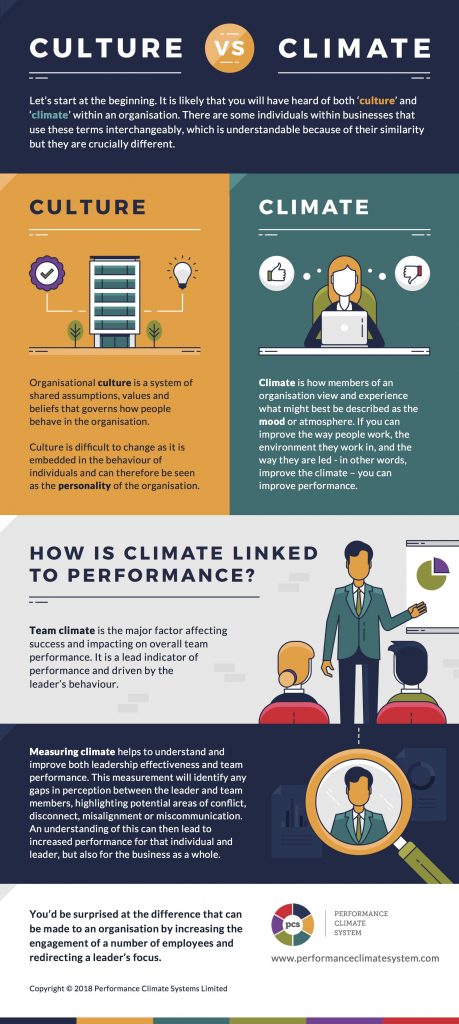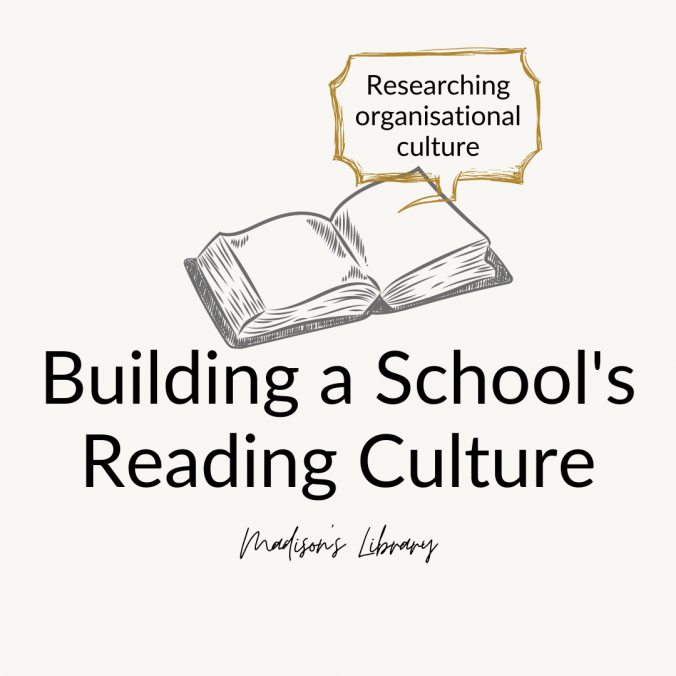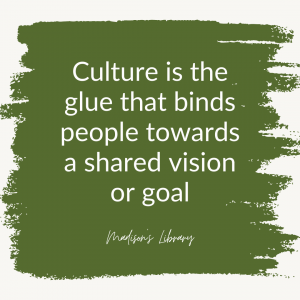Building A School Reading Culture – Part 2 Organisational Culture Research
Building a positive reading culture might seem like a pretty obvious goal for a school librarian. It makes sense, right? It’s an admirable goal and the importance of such can be supported with evidence around the benefits of reading across academic, social, and emotional domains. But when I set myself a goal of building a positive reading culture at my school, I was challenged to think more deeply about the process. What exactly is a positive reading culture? What does that look like and how can I measure that? You can read about the start of this journey in my post Building A School Reading Culture Part 1 Getting Started.
In this second part in my journey, I’ve been investigating organisational culture, outside of just the school library realm. This then led me to investigating organisation climate. Before I could unpack what a reading culture is and how to measure and improve it, I first needed to understand what culture is at an organisational level. I started by diving into the literature around organisational culture.
So, what is organisational culture?
The research agrees, organisational culture matters (Schein, 2019; Toying, Emeka & Akanji, 2020). Culture affects the approach and performance of an organisation (Pater, 2015). It has also been called the glue that binds people towards a shared vision or goal (Lee, 2020). Schein (2019) argues that culture can be toxic, empowering, coercive or good, while others (Health, 2021) state that culture is not good or bad just productive or unproductive or contributing to achieving the objects of the organisation or not contributing.
A definition
Organisational culture has been studied since the 1920s and has dominated in organisational and management research in the past three decades (Toyin et al 2020). Trust me, there is a lot of literature and research out there on this topic. Despite this, there is no one set agreed definition of organisational culture (Ng & Ng, 2014). Some define organisation culture as a set of goals and values of the organisation. It is created by the organisation and communicated or taught to those within the organisation (Ng & Ng, 2014). Others define organisational culture as the basic underlying assumptions and expectations that characterise the organisation. These might have been invented, discovered or developed in response to problems, both internal and external to the organisation (Lee, 2020). Still another viewpoint of organisational culture is that there is no one organisational culture, but a series of sub cultures, the sum of which can be called the culture of the organisation (Ng & Ng, 2014). Perhaps more simply put, culture is the way things are done in an organisation (Heath, 2021). Commonly mentioned in definitions of organisational culture are shared values, goals, practices and attitudes (Denning, 2011). These might be set by leadership or key players in the origination and might equate to how people feel about the organisation and the work that is done (Miller, 2021). Fralinger and Olson (2011) argue that a strong and well-defined culture helps to achieve an organisation’s objectives and vision through aligned actions. Culture and values are integrated, says Lee (2020).

How is culture developed?
Again, when looking at how an organisational culture develops, there is disagreement within the literature. Some say that culture grows and evolves continuously and needs guidance (Heath, 2021). Others say that culture starts with leadership tools such as vision and a story of the future of the organisation (Denning, 2011). Fullan (2001) argues that culture cannot be controlled but it can be understood and led and that leadership makes a difference. To do this, though, leaders must first understand the underlying forces on culture (Pater, 2015). Culture is built over time but is something that can be easily broken (Lee, 2020). They do not specify what a broken culture looks like.
So, a reading culture values reading and valuing reading builds a culture of reading.
Organisational climate

This infographic explores the differences between the terms organisational culture and organisational climate.
When reading about organisational culture, I came across the term organisational climate. Was there a difference? Should I be focusing on climate instead of culture? While some seem to use the terms interchangeably, others posit that there is a distinct difference between the terms. Earhart and Schneider (2016) suggest that they have most often been studied by different research and literature circles. Organisational climate is related to culture but is more observable. if culture is the values, belief systems, motivations and assumptions, climate is the patterns of behaviour, habits and feelings (Randhawa, 2019). Organisational culture is broader than organisational climate, however, both provide a perspective of the organisational context and the shared experiences of those within the organisation, as well as the role of meaning and leadership. Culture is the broader of the terms and as it deals with all experiences within the organisation, whereas climate is narrower in terms of perceptions around policies, practices and procedures (Ehrhard & Schneider, 2016). While both culture and climate are hard to change, climate is more adaptable as it is about practices and the way in which people work.
How to measure culture?
Measuring culture – a hidden construct – seems challenging. Even though climate might be the more observable behaviours, it is still hard to definitively measure. While there are some tools that researchers have used to measure and assess culture, a number of factors are consistent. These include leadership, communication, diversity, wellness, agility, environment, vision, innovation, social. These are often measured via engagement and culture surveys, exit interviews, and more informal checkins (Berry, 2018; Lee, 2020; Randhawa, 2019).
So what does this mean for my building a reading culture project? I understand better what we mean by a culture. It also reinforces for me how important it is to establish our library’s values, vision and plan for the future, as well as getting stakeholder insight into this. If you want to read more about how I’m doing that, check out my Branding A School Library post.
In my next post in this series, I’ll be sharing my research into culture change.
References:
Berry, L. (2018). 8 ways you can measure company culture. Medium. https://medium.com/interact-software/8-ways-you-can-measure-company-culture-77c1b27a3061
Denning, S. (2011). How do you change an organisational culture? Forbes. https://www.forbes.com/sites/stevedenning/2011/07/23/how-do-you-change-an-organizational-culture/?sh=6c95d21639dc
Ehrhart, M., & Schneider, B. Organizational Climate and Culture. Oxford Research Encyclopedia of Psychology. Retrieved 19 Oct. 2021, from https://oxfordre.com/psychology/view/10.1093/acrefore/9780190236557.001.0001/acrefore-9780190236557-e-3.
Fullan, M. (2001). Leading in a culture of change / Michael Fullan.
Heath, N. (2021). 5 ways to maintain positive culture change. In The Black. https://www.intheblack.com/articles/2021/02/01/positive-culture-change
Katzenback, J.R., Steffen, I., & Pronely, C. (2012). Culture change that sticks. Harvard Business Review, July-August. https://hbr.org/2012/07/cultural-change-that-sticks
Lee, J. (2020). Accelerating organisation culture change : Innovation through digital tools / Jaclyn Lee. http://onesearch.slq.qld.gov.au/permalink/f/1oppkg1/slq_alma21292251100002061
Miller, M.K. (2021). The entrepreneur’s guide to company culture. Foundr. https://foundr.com/articles/leadership/guide-company-culture
Ng, J. C. Y., & Ng, K. Y. N. (2014). Culture organisational culture and organisational climate: An integrative approach. Indian Journal of Commerce and Management Studies, 5(2), 18-26. Retrieved from http://ezproxy.slq.qld.gov.au/login?url=https://www.proquest.com/scholarly-journals/culture-organisational-climate-integrative/docview/1539798840/se-2?accountid=13378
Pater, R. (2015). Advanced culture change leadership. Professional Safety, 60(9), 24-26. Retrieved from http://ezproxy.slq.qld.gov.au/login?url=https://www-proquest-com.ezproxy.slq.qld.gov.au/scholarly-journals/advanced-culture-change-leadership/docview/1709999607/se-2?accountid=13378
Randhawa, M. (2019). How can you measure organisational culture? MyHRFuture. https://www.myhrfuture.com/blog/2019/7/19/how-can-you-measure-organisational-culture
Rick, T. (2016). Create a culture change – Driving organisational culture change. Meliorate. http://www.torbenrick.eu/blog/culture/create-a-culture-change/
Schein, E. H. (2019). A new era for culture, change, and leadership. MIT Sloan Management Review, 60(4), 52-58. Retrieved from http://ezproxy.slq.qld.gov.au/login?url=https://www-proquest-com.ezproxy.slq.qld.gov.au/scholarly-journals/new-era-culture-change-leadership/docview/2269353958/se-2?accountid=13378
Tait, A., & Faulkner, Dave. (2019). Dream team : A practical playbook to help innovative educators change schools / Aaron Tait and Dave Faulkner.
Toyin, A. A., Emeka, S. O., & Akanji, B. (2020). A critical discourse analysis of the link between professional culture and organisational culture. Employee Relations, 42(3), 698-716. doi:http://dx.doi.org/10.1108/ER-08-2019-0344




Leave a Reply